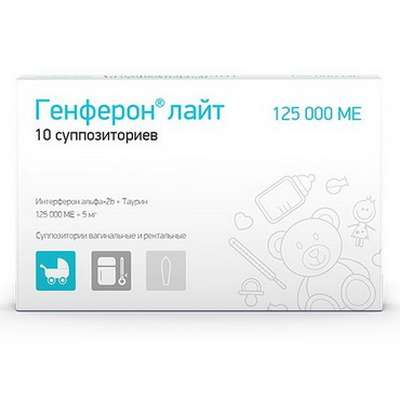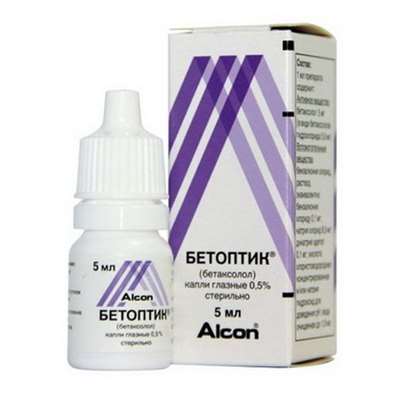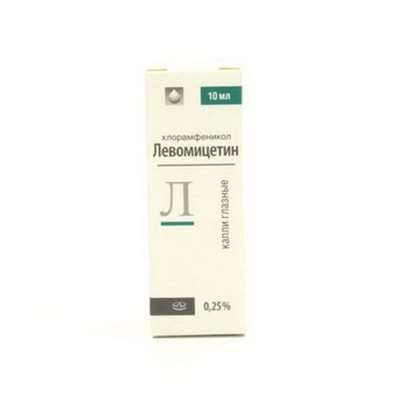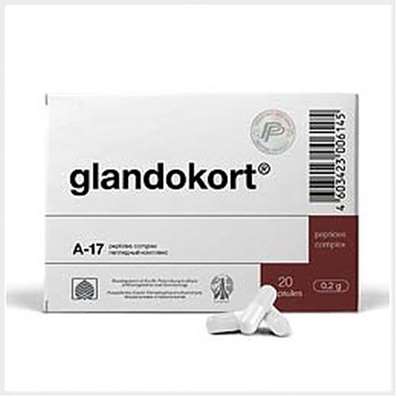Instruction for use: Nonacog alfa
I want this, give me price
Trade name of the drug – Innonafaktor, Nonacog alfa
The Latin name of the substance Nonacog alfa
Nonacogum alfa (genus. Nonacogi alfa)
Pharmacological group:
Coagulants (including coagulation factors), hemostatics
The nosological classification (ICD-10)
D67 Hereditary factor IX deficiency: Congenital factor IX deficiency; Congenital deficiency of the coagulation factor IX; Hemorrhagic syndrome with factor IX deficiency; Hemophilia B; Hemophilia B with a factor IX inhibitor; Hemophilia B in children; Deficiency of the coagulation factor IX; Inhibitory form of hemophilia; Inhibitory form of hemophilia B; Coagulopathies are hereditary; Bleeding and haemorrhage in hemophilia B; Bleeding with acquired or congenital deficiency of factor IX; Hereditary hemophilia
R58 Bleeding, not elsewhere classified: Abdominal apoplexy; Hemorrhagia; Haemorrhage of the esophagus; Hemorrhage; Generalized bleeding; Diffuse bleeding; Diffuse bleeding; Prolonged bleeding; Blood loss; Blood loss during surgical interventions; Bleeding during surgery and in the postoperative period; Bleeding during labor; Bleeding and haemorrhage in hemophilia B; Bleeding from the gums; Bleeding intraoperative abdominal; Bleeding against a background of coumarin anticoagulants; Hepatic hepatitis; Bleeding in hemophilia A; Bleeding at hemophilia A; Bleeding with inhibitory forms of hemophilia A and B; Bleeding due to leukemia; Bleeding in patients with leukemia; Bleeding; Bleeding due to portal hypertension; Bleeding due to hyperfibrinolysis; Drug bleeding; Local bleeding; Local bleeding due to activation of fibrinolysis; Massive blood loss; Acute blood loss; Parenchymal hemorrhage; Hepatic bleeding; Postoperative hemorrhage; Kidney bleeding; Vascular-platelet hemostasis; Traumatic bleeding; Threatening bleeding; Chronic blood loss
Characteristics of the substance Nonacog alfa
Recombinant coagulation factor IX, which is a single-chain glycoprotein with a molecular weight of about 55 kDa, consisting of 415 amino acid residues. Belongs to the family of serine proteases and is a vitamin-K-dependent clotting factor.
It is produced by a modified transplanted ovarian cell line of Chinese hamster CHO 1E6 using recombinant DNA technology.
Pharmacology
Mode action - hemostatic.
Pharmacodynamics
The structural and functional properties of the recombinant coagulation factor IX are similar to the endogenous coagulation factor IX. In the process of blood coagulation, factor IX is activated by the factor of blood clotting VIIa in combination with tissue factor by the external mechanism of blood coagulation, as well as the clotting factor XIa by the internal mechanism of blood coagulation. Activated coagulation factor IX in combination with an activated blood coagulation factor VIII leads to the activation of the coagulation factor X, which ensures the conversion of prothrombin to thrombin. Thrombin activates the process of converting fibrinogen into fibrin with the formation of a blood clot.
In patients with hemophilia B, the activity of the coagulation factor IX is significantly reduced, which requires replacement therapy, which provides temporary normalization of the content of factor IX and the elimination of hemorrhagic manifestations of the disease.
Pharmacokinetics
The value of the degree of reduction of the activity of the nonacoagic alpha is in the range from 32.2 to 55.9% and on the average is (42 ± 8.4)%. Administration of 1 IU / kg of nonacarpal alpha increases the activity of the circulating blood clotting factor IX by 0.77-1.41 IU / dL (average (1.05 ± 0.21) IU / dl). The molecular weight of nonacarpal alpha is 53.18 IU / dL (41.6 to 70.3 IU / dl). AUC0-96 is 1069.9 IU / dl. T1 / 2 varies from 16.5 to 33 hours (on average (24 ± 7.7) h). The average clearance value is 3.62 dl / h.
Application of the substance Nonacog alfa
Bleeding in patients with hemophilia B (congenital insufficiency of the coagulation factor IX) (treatment and prevention).
Contraindications
Hypersensitivity to hamster proteins, children under 6 years of age (no experience of use).
Application of pregnancy and breastfeeding
The influence of nonacoagic alpha on the reproductive system during preclinical studies in animals was not evaluated. Given the rarity of hemophilia B in women, data on the use of the coagulation factor IX in pregnancy and breast-feeding are absent. Use of nonagua alfa in pregnant women should only be in the presence of life indications.
Side effects of Nonacog alfa
The use of nonacarpalpha in some cases may be accompanied by the development of a number of side effects with the following frequency: infrequently (≥1 / 1000, <1/100); Rarely (≥1 / 10000, <1/1000). The most significant side effects are anaphylaxis, phlegmon, phlebitis and the formation of neutralizing antibodies.
Within each category, side effects are listed in order of decreasing severity.
From the side of the nervous system: infrequently - dizziness, headache, pre-stupor, change in taste perception; Rarely - tremor, drowsiness, a violation of taste sensations.
From the digestive system: infrequently - nausea; Rarely vomiting, diarrhea.
On the part of the immune system: infrequently - the formation of neutralizing antibodies (inhibitors of the coagulation factor IX) for a short time in a low titer (see "Precautions"); Rarely - hypersensitivity, allergic reactions, incl. Anaphylaxis (see "Precautions"), laryngospasm, bronchospasm or respiratory distress syndrome (dyspnea), wheezing, lowering blood pressure, angioedema, laryngeal edema, tachycardia, chest tightness, hives, skin rashes, burning sensation in The area of the lower jaw and skull, chills (shivering), tingling sensation, flushing of the face, inhibition, anxiety, dry coughing or sneezing, decreased vision clarity (see "Precautions"), allergic rhinitis, weakness.
From the respiratory system, chest and mediastinum: infrequently - a cough leading to hypoxia.
General disorders and complications at the injection site: infrequently - phlegmon, phlebitis, cutaneous and other reactions at the injection site (including burning and tightening sensation), discomfort, pain at the injection site; Rarely - a fever.
Other: rarely - a shiver, photosensitivity reactions.
Changes in laboratory indicators: infrequent - increased activity of AST, ALT, bilirubin concentration, activity of CKF, APF. There are data on the possible development of cyanosis.
From the side of the urinary system: there are data on the development of a kidney infarction 12 days after the administration of nonacarpal alpha about a hemorrhagic condition in 1 patient with antibodies to the hepatitis C virus.
Thrombotic complications: on the background of treatment with nonakogam alfa, cases of thrombosis development were reported, incl. Life-threatening syndrome of the inferior vena cava in newborns who were in a serious condition and who received nonacarpal alpha as a continuous infusion through a central venous catheter. There have also been reported cases of peripheral vein thrombophlebitis and deep vein thrombosis, mainly after long-term intravenous infusions not registered as a method of administration of this drug.
Inadequate response and inadequate degree of recovery of coagulation factor IX activity
There is information about cases of inadequate response and inadequate degree of recovery of coagulation factor IX activity in the application of nonacarpal alpha.
With the development of any side effects, which, presumably, may be associated with the administration of nonacarpal alpha, it is necessary to reduce the rate of administration or to suspend it.
Interaction
Studies of drug interactions were not conducted.
Overdose
Cases of an overdose of nonacarpal alpha have not been described.
Routes of administration
IV.
Precautions for Nonacog Alfa
In patients previously treated with coagulation factor IX, sometimes the formation of active neutralizing antibodies (inhibitors) is noted. The analysis for the presence of inhibitors to the coagulation factor IX, whose titer is measured in Bethesda units, is performed if it is not possible to achieve the expected level of activity of the coagulation factor IX or to stop bleeding by administering a dose calculated with the help of adequate tests. In the presence of high concentrations of inhibitors to the coagulation factor IX, therapy with nonakogam alfa may not be effective. In this case, alternative therapies may be required. Such patients should be administered by physicians with experience in the treatment of patients with hemophilia B.
No significant number of patients aged 65 years or older were included in the clinical trials of nonocoagal alpha, which makes it impossible to assess the difference in response to treatment compared to younger patients. When prescribing alopecia alfa to patients of different ages, an individual dose adjustment may be required.
IV the introduction of any protein drugs, including. Recombinant coagulation factor IX, may be accompanied by the development of a hypersensitivity reaction associated with the presence of trace residual quantities of producer protein proteins carried during the manufacturing process. Using recombinant coagulation factor IX, it is also possible to develop anaphylactic and anaphylactoid reactions.
In addition, allergic reactions can be associated with the appearance of inhibitors to the coagulation factor IX, and therefore patients with allergic reactions in history should be examined for the presence of inhibitors. It should be taken into account that in patients who have inhibitors to the coagulation factor IX, there may be an increased risk of anaphylactic reactions and subsequent injections of the coagulation factor IX. There is evidence of a higher risk of formation of inhibitory antibodies, as well as the development of acute hypersensitivity reactions in patients with deletion of the coagulation factor gene IX. In the case of deletion of the gene encoding the synthesis of the coagulation factor IX in patients, careful monitoring of the possible development of clinical manifestations of acute hypersensitivity reactions, especially during the initial phase of therapy, is necessary.
Patients should be informed of early clinical signs of hypersensitivity reactions, including. The appearance of difficulty breathing, urticaria, skin itching, the development of edema, chest compressions, bronchospasm, laryngospasm, wheezing, arterial hypotension, decreased vision and anaphylaxis. With the development of an allergic reaction or anaphylactic shock, it is necessary to immediately stop the administration of nonacarpal alpha and begin the appropriate standard therapy. With the development of severe allergic reactions, consideration should be given to the appointment of alternative haemostatic therapy. The principles of treatment depend on the type and severity of side effects.
In view of the risk of developing allergic reactions, the first administration of nonacarpal alpha should be performed under medical supervision in institutions where there are conditions for the provision of appropriate emergency care.
Doses and duration of substitution therapy depend on the degree of deficiency of the coagulation factor IX, the localization and severity of bleeding, the general condition of the patient, the clinical effect of the therapy and the individual pharmacokinetics parameters of the patient. The dose of nonacarpal alpha may differ from the doses of plasma coagulation factor IX. To ensure the necessary activity of factor IX in the blood with replacement therapy, it is recommended to control the level of coagulation factor IX in plasma by means of coagulation analysis.
In spite of the fact that nonacarpal alpha does not contain other active substances, it is necessary to bear in mind the risk of development of thromboses and the syndrome of disseminated intravascular coagulation (DVS). Since the appointment of previously used coagulation factors II, IX, X in combination and prothrombin complex was associated with the development of thromboembolic complications, the risk of their development will increase with the treatment of coagulation factor IX of patients suffering from DIC syndrome and patients with signs of fibrinolysis.
Given the potential risk of thromboembolism with the introduction of recombinant coagulation factor IX, patients suffering from liver disease in the postoperative period at risk of developing thrombosis or DIC syndrome should be monitored to detect early manifestations of thrombotic complications using appropriate tests, and in their development Appropriate treatment. In each of these situations, the ratio of the potential benefit of recombinant coagulation factor IX therapy and the risk of these complications should be assessed.
To reduce the likelihood of agglutination in a syringe or system for intravenous administration, it is advisable to limit the ingress of blood into them when administered. In the case of the development of erythrocyte agglutination in a system or syringe, the consumables used should be disposed of and the introduction repeated using a new package of nonacoagic alpha.
In attempts to induce immune tolerance in patients with hemophilia B, producing coagulation factor IX inhibitors and having allergic reactions in the anamnesis, there have been cases of development of a nephrotic syndrome. The safety and efficacy of the use of nonacup of alpha to induce immune tolerance have not been determined.
Impact on the ability to drive vehicles. Studies of the influence of the nonacqua alfa on the ability to drive and work with mechanisms that require increased concentration of attention have not been carried out.

 Cart
Cart





